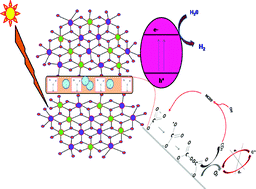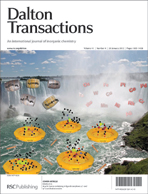A series of novel photocatalysts Zn/Cr LDH with different Zn/Cr molar ratios (2 : 1, 3 : 1, 4 : 1 and 2 : 1–CO3) were fabricated by a co-precipitation method and evaluated for photodecomposition of water using visible light irradiation. Various characterization methods were employed to investigate the structures, morphologies and photocatalytic properties. In comparison to Zn/Cr (2 : 1) LDH, Zn/Cr–CO3 (2 : 1) LDH extends the absorption edges to the visible region and exhibits good photocatalytic activity, even without the assistance of co-catalysts. The visible light photocatalytic activity is ascribed to the charge transfer spectra of octahedral Cr ions in LDH. Zn/Cr–CO3 LDH shows enhanced photocatalytic activities compared to Zn/Cr LDH as carbonate ions oxidise by holes to form carbonate radicals, inhibit the rapid recombination of e− and h+ charge carriers and thereby suppress the backward reaction to some extent. This work provides a detailed understanding of the semiconductor properties of LDHs for photocatalytical hydrogen evolution.

You have access to this article
 Please wait while we load your content...
Something went wrong. Try again?
Please wait while we load your content...
Something went wrong. Try again?


 Please wait while we load your content...
Please wait while we load your content...